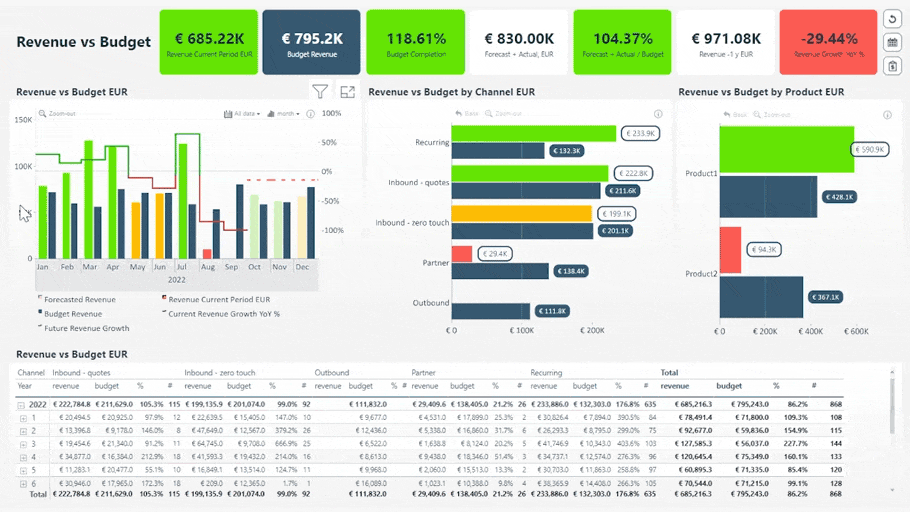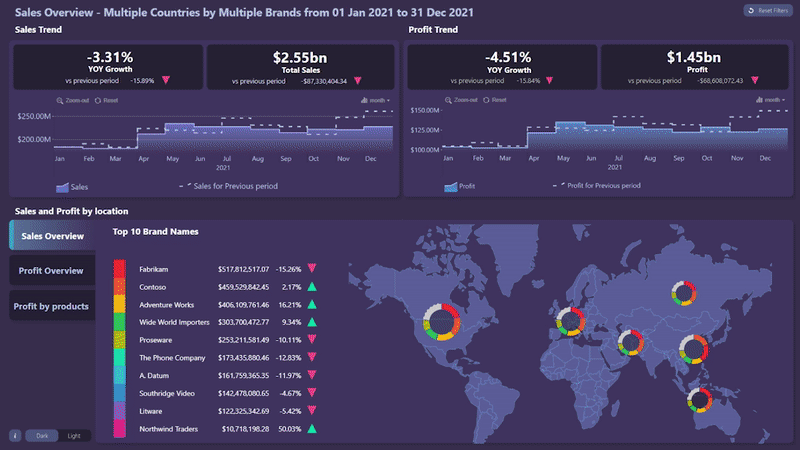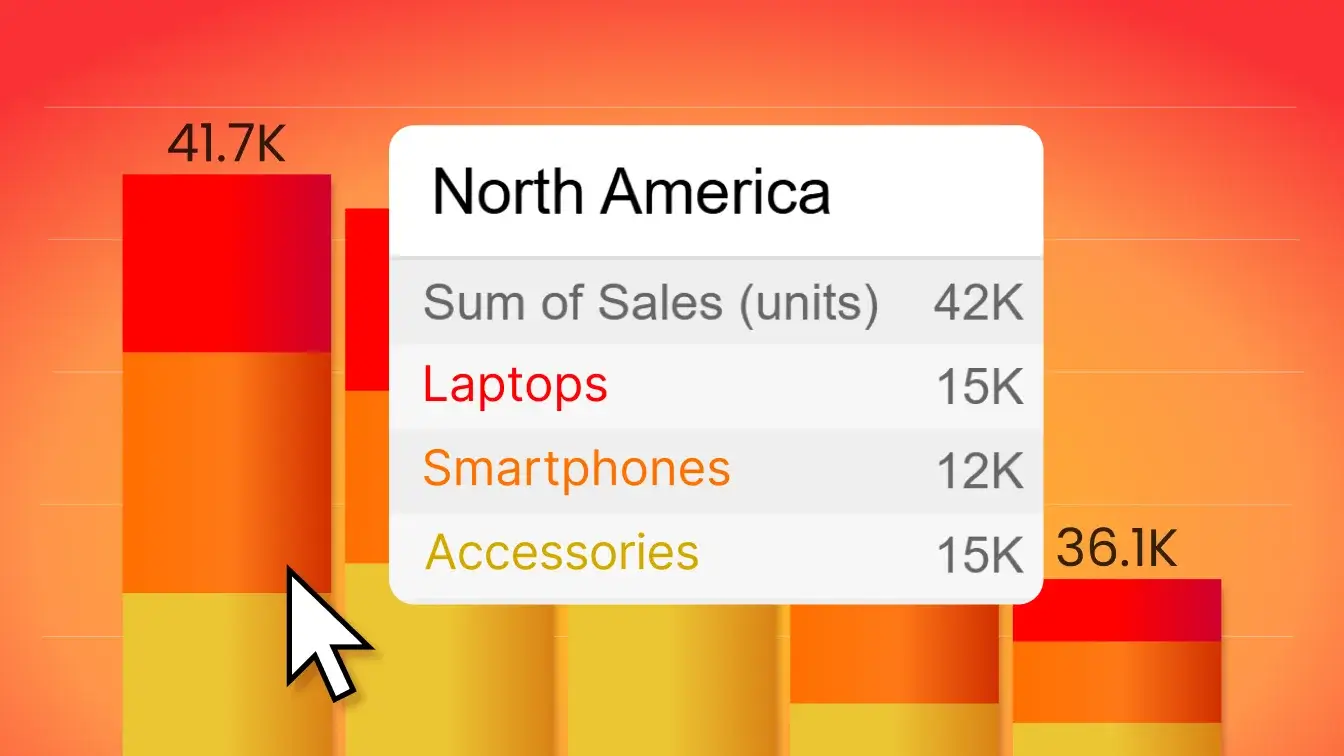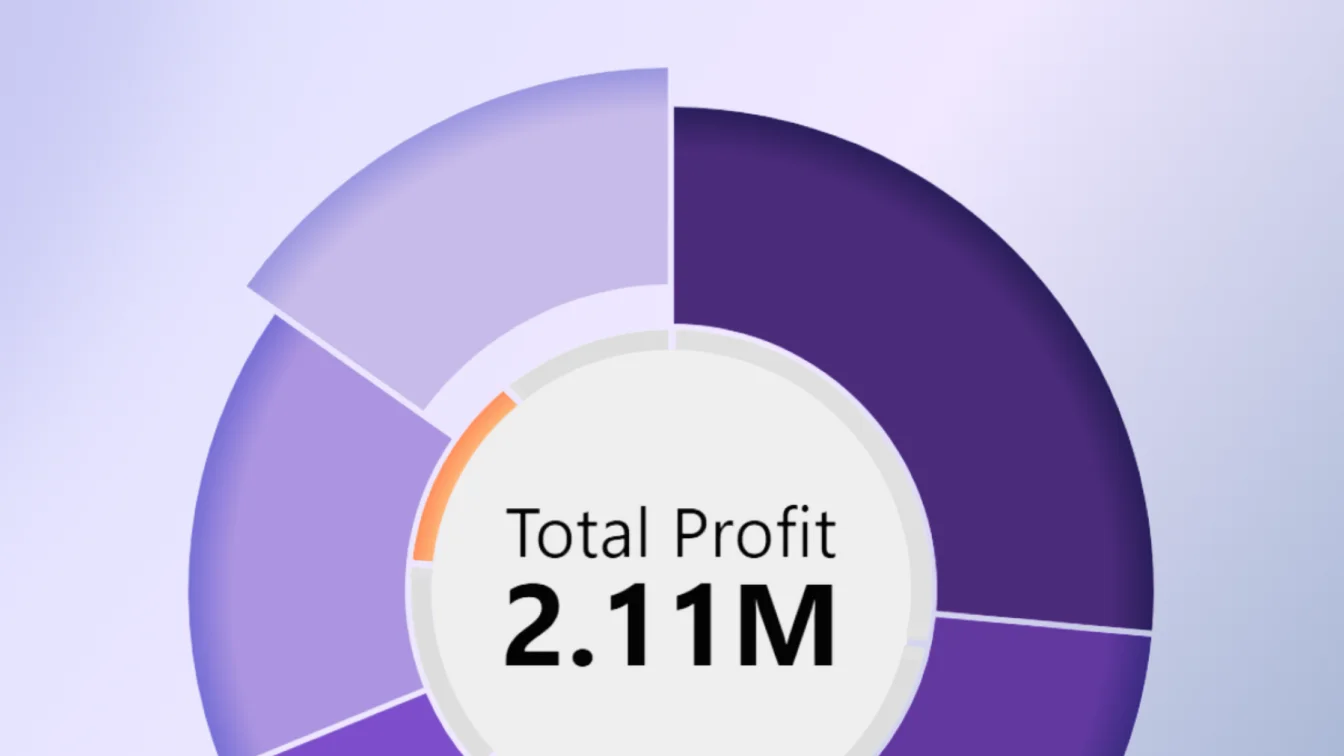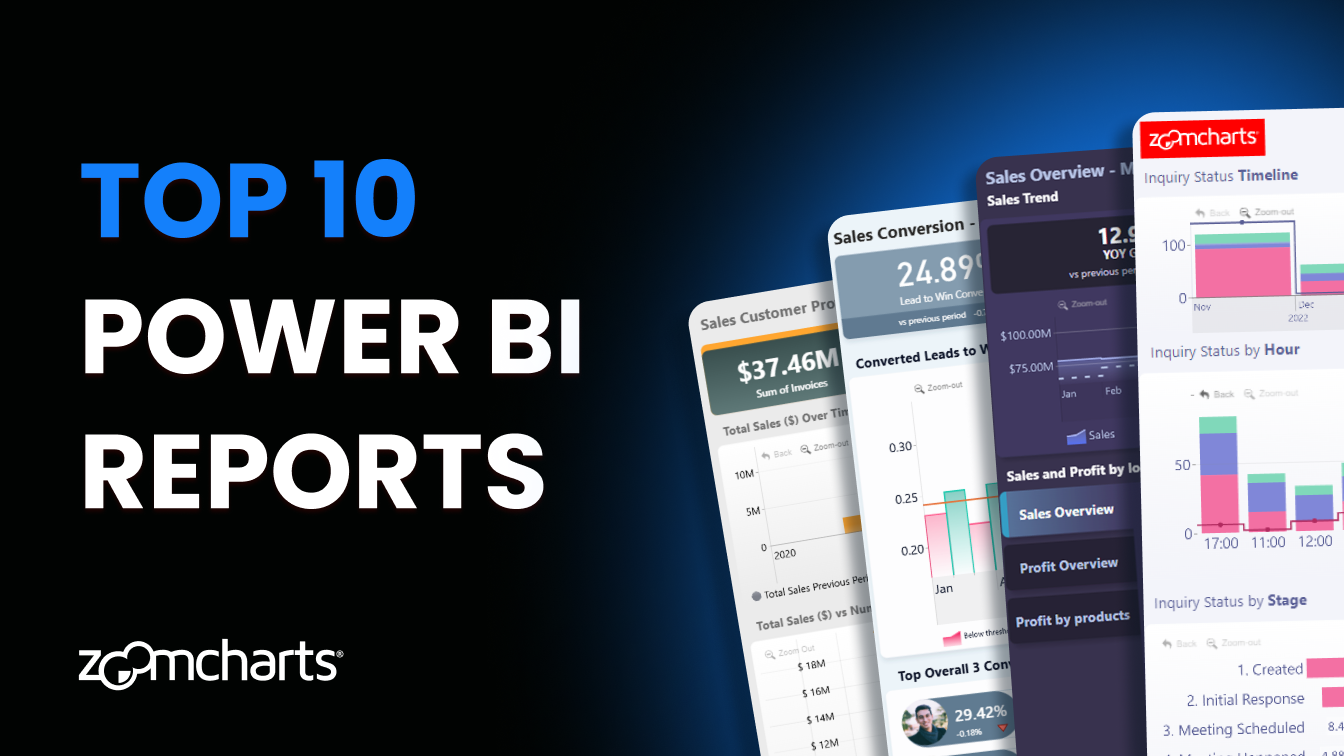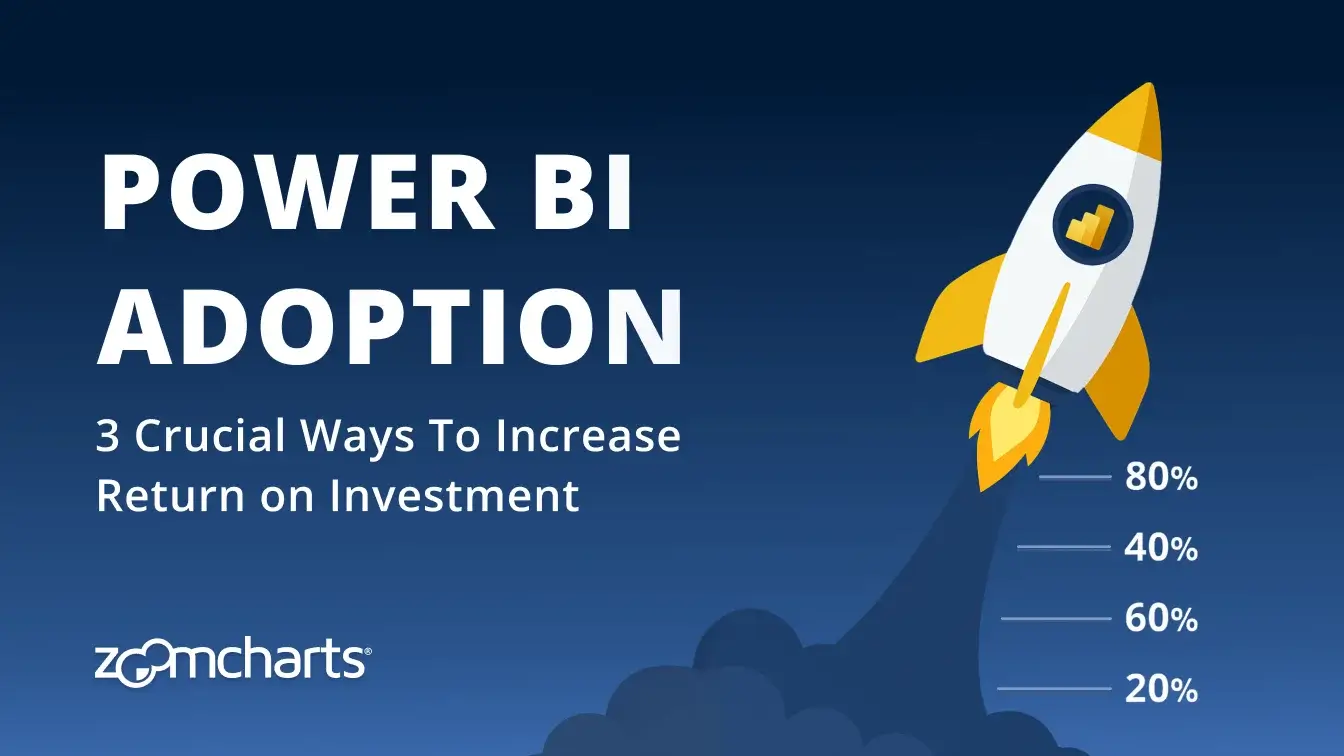Oct 02, 2025
Power BI Adoption: 3 Reasons Your Investment Isn’t Paying Off
Is your business struggling with poor ROI from Power BI? The most likely reason is Power BI adoption rate - and in this article, we will share three most common causes for that and solutions how to fix them.
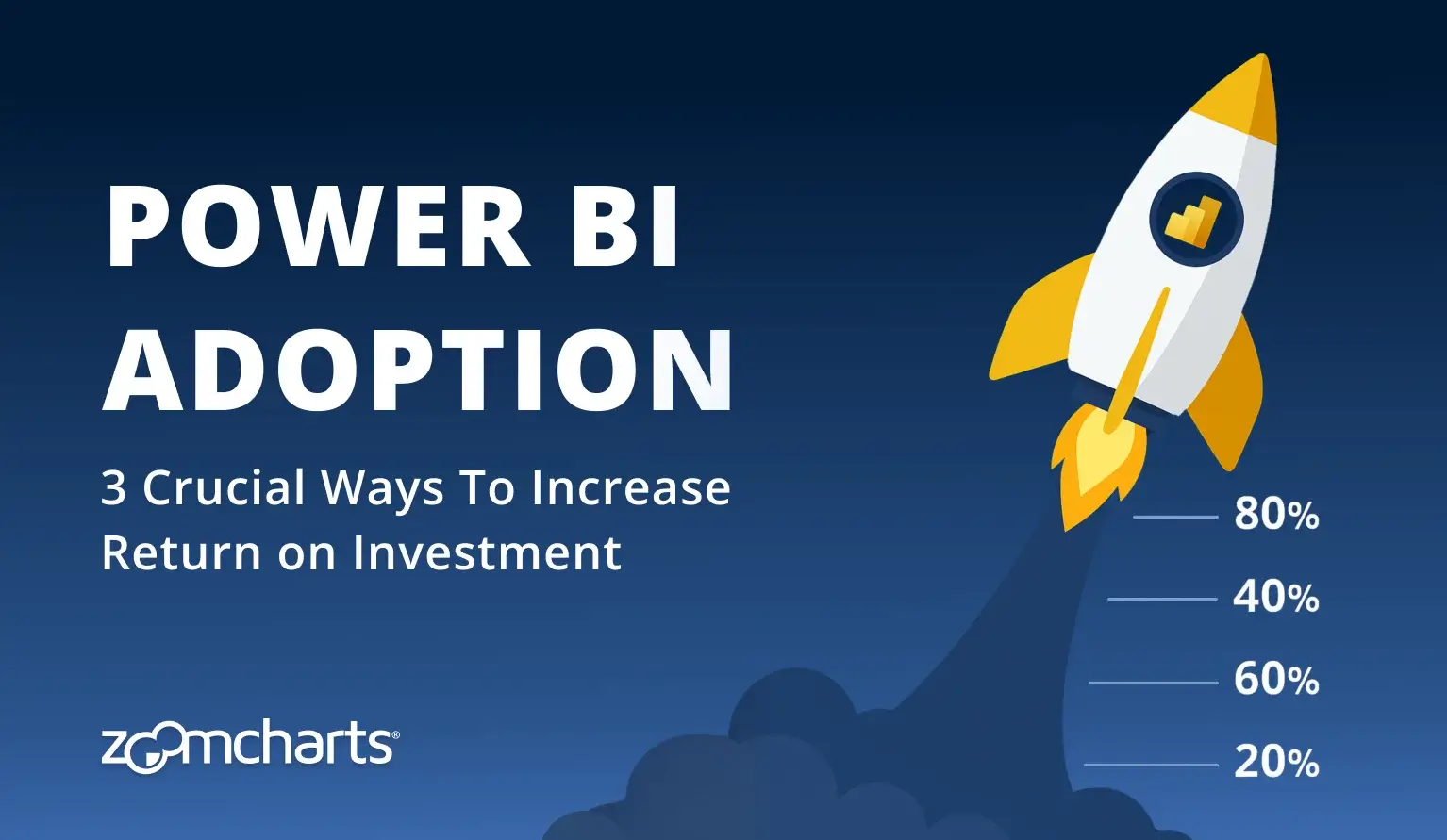

Is your business struggling with poor ROI from Power BI? The most likely reason is Power BI adoption rate - and in this article, we will share three most common causes for that and solutions how to fix them.
Jonathan is a Chief Data Officer (CDO) at a large global enterprise. A year ago, he led the project to transition their entire data infrastructure to Power BI. After reading multiple success stories and use cases, he championed the idea to the board: let’s invest in Power BI, and in return, we’ll get:
- Centralized data storage with regular updates,
- Better governance, security and access control,
- Self-service analysis for any user across multiple departments,
- Cost-effectiveness and easy scaling,
- More employees using data in their decision-making.
However, a year has passed since then, and the reality is different from what they envisioned – finance department still does their books in Excel, marketing team manually compiles each campaign’s stats from different sources, sales team still performs purely based on vibes, and the board members haven’t even touched a single report, preferring brief two-sentence emails.
Jonathan’s pitch for Power BI relied on the assumption that it would be adopted by more employees within the organization, and they would use it to analyze data every day – which in turn means a better return on investment. But the poor adoption rate means that few if any people are getting its benefits, and the money invested in building the data infrastructure and licensing Power BI lies dormant.
If this story seems familiar, or, better yet, if you see Jonathan in yourself, then this article is for you. We will explore the main reasons behind lackluster Power BI adoption rates within an organization, and give practical steps to mitigate these issues and take action.
After all, we truly believe that Power BI is an incredible data platform (read our 9 reasons why in this article), and the more people use it for everyday data analysis, the more value you get from it; not just monetary, but also as time savings and better decision-making.
Power BI Adoption: Why it Matters
There’s no getting around the fact that business intelligence is expensive. Round up the initial investment (data infrastructure, transition, onboarding), add the recurring costs (licensing and cloud capacity), and you will arrive at an eye-watering number, especially for large enterprises. While Power BI is considerably more cost-effective than its main competitors, it can still be a significant investment.
But for many businesses, it is completely worth it - they get a powerful data solution that can seamlessly integrate multiple data sources, process thousands or even millions of rows, and make data exploration accessible on-demand for more employees, not just dedicated data analysts. This allows them to identify opportunities or potential issues faster, and make more accurate decisions.
The Total Economic Impact of Microsoft Power BI, a study by Forrester Consulting, performed across 63 companies, found out that over a three-year period, Power BI’s reported ROI was 366%. This was a combination of reduced costs, better user productivity and time savings, and a direct increase in revenue. We recommend reading the full study, but one thing we’d like to highlight is that the payback period was <6 months, and the increase became sharper with each year.
So, why did it work for them?
When investigating a subpar ROI, the first thing many organizations will look at will be the technical side – infrastructure, data quality, data source integration, and use of advanced analytics and automation. Yes, it is important to have all of this in order. But in most cases, a disappointing ROI stems from a basic reason – people simply do not use it.
If users don’t adopt Power BI, your investment lies dormant – like a brand new, fully furnished conference room that no one ever books for meetings, or in-house catering when most employees still prefer takeout deliveries. Here’s how sluggish Power BI adoption will negatively affect your ROI:
- Users will not get the main benefits of Power BI: faster time-to-insight, more accurate analytics, and cross-analysis between multiple sources. Therefore, they will miss PBI’s potential effect on their business goals (e.g., revenue, conversion rate, retention or other metrics).
- Instead of self-service analytics, where users and teams can easily find insights on their own when needed, data-related tasks will still be relegated to dedicated data analysts. This slows down operations and means more workload for them (and takes focus away from other tasks).
- All the previous problems that you wanted to resolve (inefficient workflow, decentralized data sources, slow or non-existent data updates, security, high costs) will remain if users stick to legacy tools instead of adopting Power BI.
- Power BI is a versatile data platform that can be used for many purposes in many different departments; so, integrating all these tasks within PBI instead of purchasing and maintaining separate tools for each will significantly save costs.
So, if you are looking for ways to increase your Power BI ROI, user adoption is possibly the most important metric. How many of your target users are actively using it for work? If your monthly report and dashboard usage is below ~70%, you are not getting the full value of Power BI. However, the good news is that the problem has now been identified – and here’s what you can do about it.
Three Factors That Limit Power BI Adoption
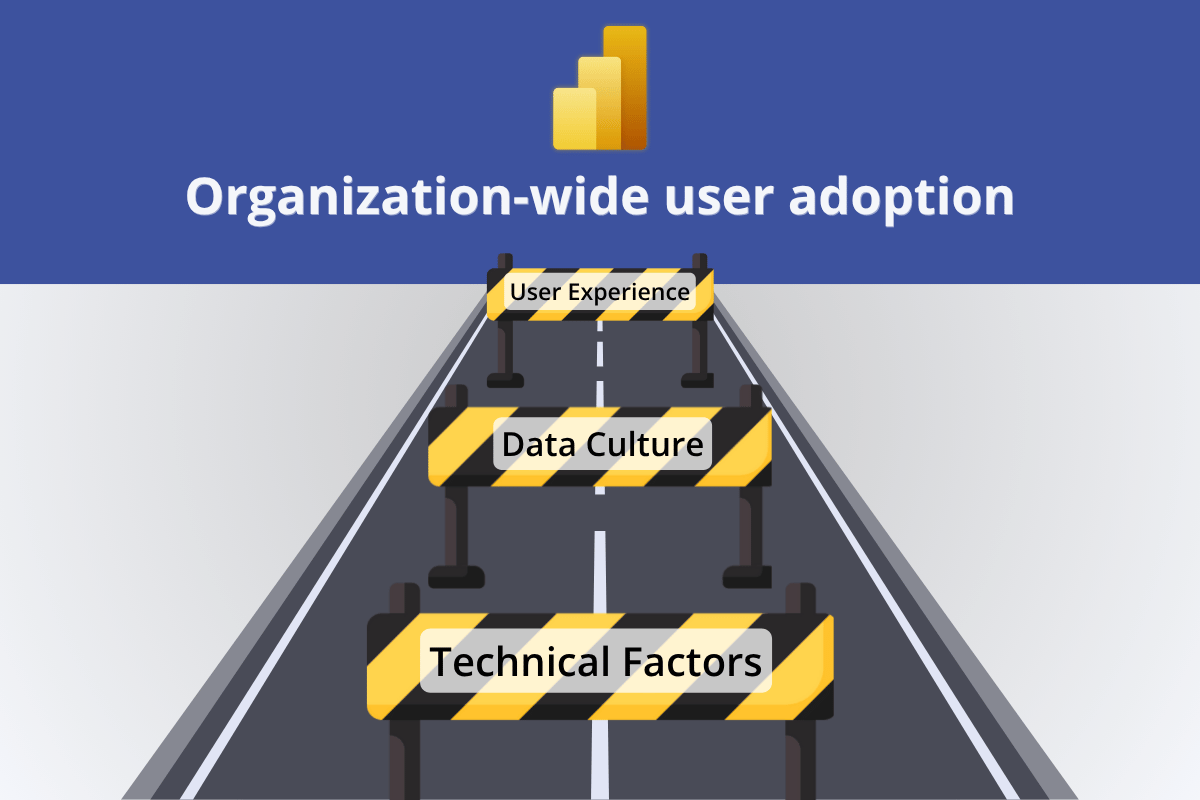
While resolving other limiting factors for your ROI, such as strategic alignment or technical challenges, is straightforward (not simple, but straightforward), it’s way trickier to identify the causes and find solutions for lackluster Power BI adoption.
The reasons could be technical, cultural, behavioral, or a mix of all three. We will list the most common roadblocks for company-wide Power BI adoption so you can check if they apply to you. For each, we will also share a solution.
#1: Poor Data Foundation Will Destroy User Adoption

One thing that all data-driven companies with high Power BI adoption rates have in common is that their Power BI back-end is pristine. The data is clean, accurate, and up-to-date. There are no performance issues or errors, and the governance is set up so that the required data is accessible by those who need it.
This is important because the end user will interact with the front-end (reports, dashboards), but they will have no control over the back-end. This means that if they run into any issues, they will have two options – create a support ticket and hope for the best… or give up, quietly utter some colorful language, and simply try doing the task without PBI.
If your goal is to build a team-wide habit of regularly consulting Power BI reports before each decision, this is a sure-fire way to completely tank that effort at its very root.
- Performance issues: will cause user frustration, negatively affect UX and waste their time. If each query takes multiple seconds (or even minutes in the very worst cases), they will be afraid to even touch the report in fear that any click could lock them into staring at the loading circle as it spins around for a good while.
- Access issues: improperly set up governance will cause two problems: user frustration (seeing ‘No access’ error message and having to request access is annoying and time-consuming), and confusion on what is available for use and what is not.
- Untrustworthy insights: poor data quality, no clean-up and standardization, and modelling mistakes are likely to return inconsistent, erroneous or confusing insights. In that case, can you blame the users for avoiding the tool if they need to second-guess each answer?
Solution
Implemented properly, Power BI makes data analysis faster, easier and more secure; so, if any of the potential issues above sound familiar to you, it means that something has gone seriously wrong in the back-end. Thankfully, technical issues have technical solutions (unlike human factors, which are more complicated), so identifying and resolving them should net instant results.
- Poor performance: could mean a weak link in the data pipeline (slow or unstable connections i.e. to data warehouse), but another culprit could be too many or too large queries. For example, if the table has a million rows about each transaction, but the user just needs sale totals for each location, then it’s better to summarize that data instead of processing and loading the entire dataset.
- Access issues: Power BI’s data governance tools are excellent for providing certain data on a need-to-know basis, and you can use Microsoft Entra ID to authorize access, even on a row-by-row level. Another part of the process is informing users on what they can access with their permissions so they know that they can use that data for their work.
- Data quality: best solved before even reaching the reporting layer. Implement robust ETL processes to clean and standardize data, enforce consistent KPI definitions across datasets, and validate models to ensure calculations and relationships work as intended.
#2: “Why Should I Use It if No One Else Does?”

Behind every Power BI success story lies a focused effort to create a data-driven culture – an environment where the first instinct of each employee when they encounter a business question is to explore data. They are data-literate, know what data and tools are available to them, they know how to access and use them… and most importantly, they know that others do it too.
User adoption is like an avalanche; as more people start using Power BI to analyze data for their work, even more people will follow their example. That could be because they see Power BI in action and witness its value as others use it. Or because they were initially reluctant to learn a new tool, but seeing others adopt it inspires them to explore it as well. Could also be plain old peer pressure – “everyone else is using it, I don’t want to get left behind”. Either way, you need to get the ball rolling, and it has to start somewhere.
Because the opposite is true as well. Imagine it from an employee’s perspective – they hear talks about the company getting a fancy new data tool, and they receive an email that “strongly urges” employees to start using it. But I don’t know what it is, how it will help me, none of my colleagues use it either, and no one is asking me to. So, I’ll just stick to what I know - my trusty Excel sheets.
Solution
Forget the phrase “If you build it, they will come”. No matter how useful and easy-to-use it is, introducing a new tool will cause significant changes in an employee’s workflow. That’s a significant friction point for user adoption. Simply deploying Power BI and hoping that employees start using it on their own is wishful thinking – you need a Power BI adoption strategy. This means tackling three points:
- Data literacy: employees’ overall knowledge about data and the ability to correctly interpret it.
- Data culture: an internal environment that encourages exploring data before making decisions.
- Onboarding: provision of learning resources and training activities for day-to-day use of Power BI, and focused user involvement efforts.
In our article about data literacy, we outlined three core pillars: leading by example, employee training, and easy access to data tools. Leading by example means that change should come top-down, and as more board members, department heads, and managers start using data-driven decision-making processes, employees will follow. Employee training means involved and focused effort with data literacy frameworks, not just simple dissemination of learning resources.
There’s a great series of articles on Microsoft Learn called Microsoft Fabric Adoption Roadmap. They tackle both technical and cultural challenges step-by-step for a more successful adoption of Fabric (which Power BI is a part of). So, if you are developing your own Power BI adoption framework, we highly recommend taking a look at this resource.
#3: Do Your Reports Have Good User Experience?

Power BI is an incredibly capable business intelligence platform; there’s no denying that. But users won’t care about how impressive your star schemas are – they only want quick and easy-to-find answers to their questions. Most people will interact with data through reports and dashboards – and if they leave a poor first impression or are frustrating to use, there goes your goal of widespread Power BI adoption.
A study by Gartner found that after introducing new business software, 40% of employees avoid it or use it as little as possible if their initial experience was negative. Conversely, if it was positive, 41% explored its features further and started using it more. So, if you want to increase Power BI user adoption, then it’s worth focusing on what the users see in their screens and how they interact with it.
Power BI is built for interactive data visualization, and with it, you can create reports and dashboards that look great and are user-friendly. But are your reports beautiful and easy to use?
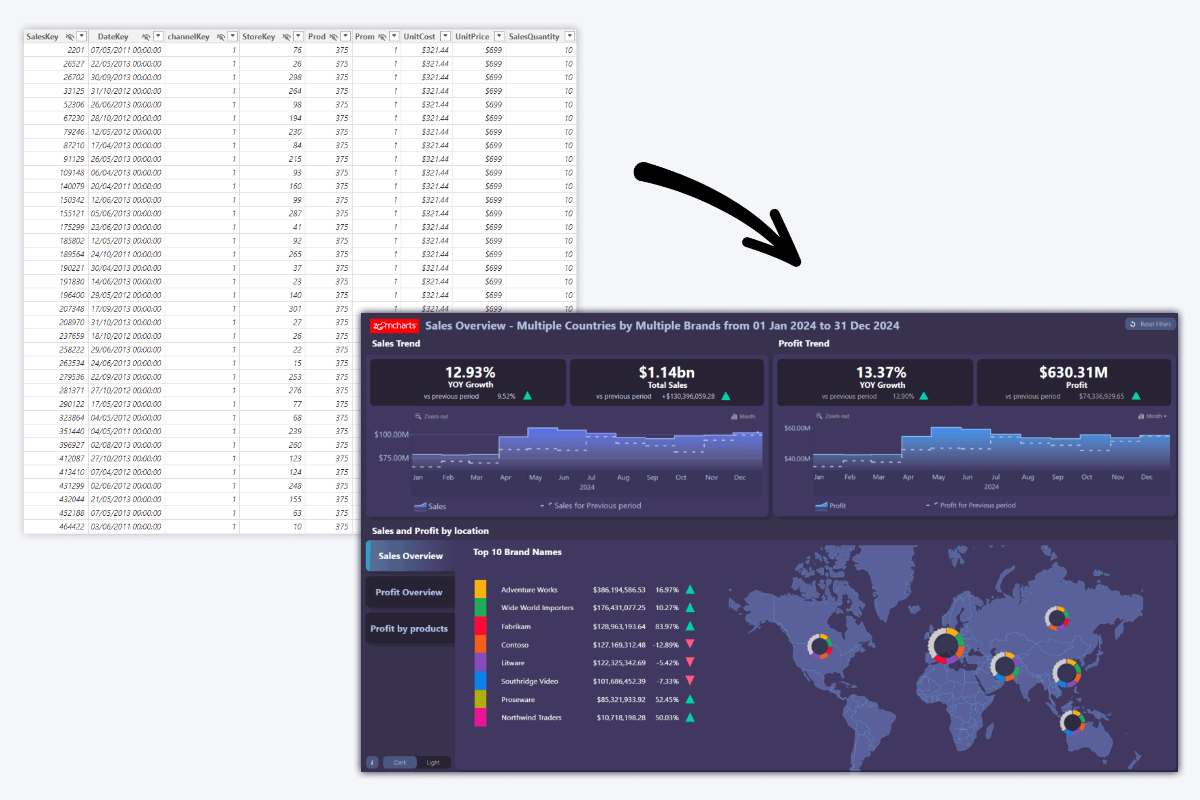
There are some who believe that focusing on report design is a luxury; an optional “nice-to-have”. However, it is an important part of a successful Power BI adoption strategy that will not just boost user engagement and satisfaction, but also provide multiple tangible benefits:
- Reliability: Clarity and readability will increase user trust in data and make them more confident in their decision-making. In addition, they will be able to discover insights that would have otherwise been missed.
- Speed: Users can quickly find what they need with intuitive interactions for filtering, drill down and other actions; this will increase efficiency (spending less time to find answers), and reduce user frustration.
- Exploration: Users can avoid tunnel vision with reports that initially show an overview but allow drill down for a more detailed view on-demand. In addition, they can analyze the same data from multiple perspectives with instant cross-filtering.
- Inclusivity: Many users do not use data because they perceive it as something complicated; but easy-to-use reports that use design paradigms that are already familiar to them will increase user engagement and make data exploration more inviting. You’ll also save time on training and onboarding.
These are the practical benefits of report design, but there are some less tangible but equally important factors that contribute to increased user adoption as well, such as smoother animations, aesthetic appeal and the overall “feel”. Truth is, people like to use things that look good and feel nice – so, leverage Power BI to design reports that users want to use.
Solution
One of the main reasons why Power BI is so popular is its all-in-one capabilities – it’s not just ETL, not just a data processing tool, and not just a report maker, it’s all three in one. So, paying equal attention to all three aspects will net you great results. If you’re looking for ways to create better reports that increase user satisfaction, we recommend reading this article.
Want to expand Power BI’s data visualization capabilities even further? Then our Drill Down Visuals is what you’re looking for. It’s a suite of 21+ visuals (including Combo, Pie, Donut, Waterfall, Timeline, Map, Graph and more) that are designed ground-up for intuitive data exploration. Report creators will love the wide variety of customization options, whereas users will enjoy the ease-of-use – simply click on data to instantly drill down.
What’s more – they are designed to work together and act not just as visualizations, but as interactive slicers. We expanded on Power BI’s built-in cross-filtering by seamlessly filtering data across the entire report when users select, filter, or drill down – so each click will reward them with focused and relevant insights. Of course, another crucial aspect we paid attention to is touch support, and smooth animations.
Combine all these factors together, and for users, exploring Power BI reports will feel less like work and more like using their favorite smartphone apps – which will do wonders for your Power BI user adoption and their involvement in data analysis. Want to see it in action? Head to our Report Gallery to try live demos and download ready-to-use Power BI report templates.
These examples were created with ZoomCharts Drill Down Visuals, which will empower you to create more intuitive, insightful and interactive reports. What’s more, we offer a Power BI Report Development service – with it, your business can receive professionally designed Power BI reports based on your requirements, licenses for our visuals, plus training and support.
Key Takeaways
One of the biggest factors that limit potential ROI from your investment in Power BI is user adoption. The more people use Power BI, the more value you get from it. Here’s what to focus on:
- Making sure that the back-end works seamlessly and produces accurate, error-free data
- Fostering a data-literate, data-driven company culture that encourages using Power BI; led by examples from department leads and managers
- Ensuring great user experience with user-friendly and visually appealing reports; after all, it’s the main way the majority will experience Power BI.
Related content
- Business Intelligence: What It Is & How To Implement It
- Top 9 Benefits of Power BI
- Top 10 Power BI Tips and Tricks for Better Reports

Want more info like this?
Subscribe to our newsletter and be the first to read our latest articles and expert data visualization tips!
